You’ve probably heard it, the famous countdown as the Apollo 11 rocket is about to launch:
…2, 1, zero, all engine running…
LIFT-OFF! We have a lift-off, 32 minutes past the hour. Lift-off on Apollo 11.
It must have been a very exciting moment for those who were alive to follow the launch back then. The Apollo 11 program was the culmination of years of hard work by scientists and engineers. Humankind’s first trip to the surface of the Moon, in a time when computers were still the size of a room. For most of us being a part of such a momentous mission, to further mankinds knowledge of the universe, will just be a dream. Rocket science is hard, so for most of us rocket launches and space missions are just something we get to follow from afar.
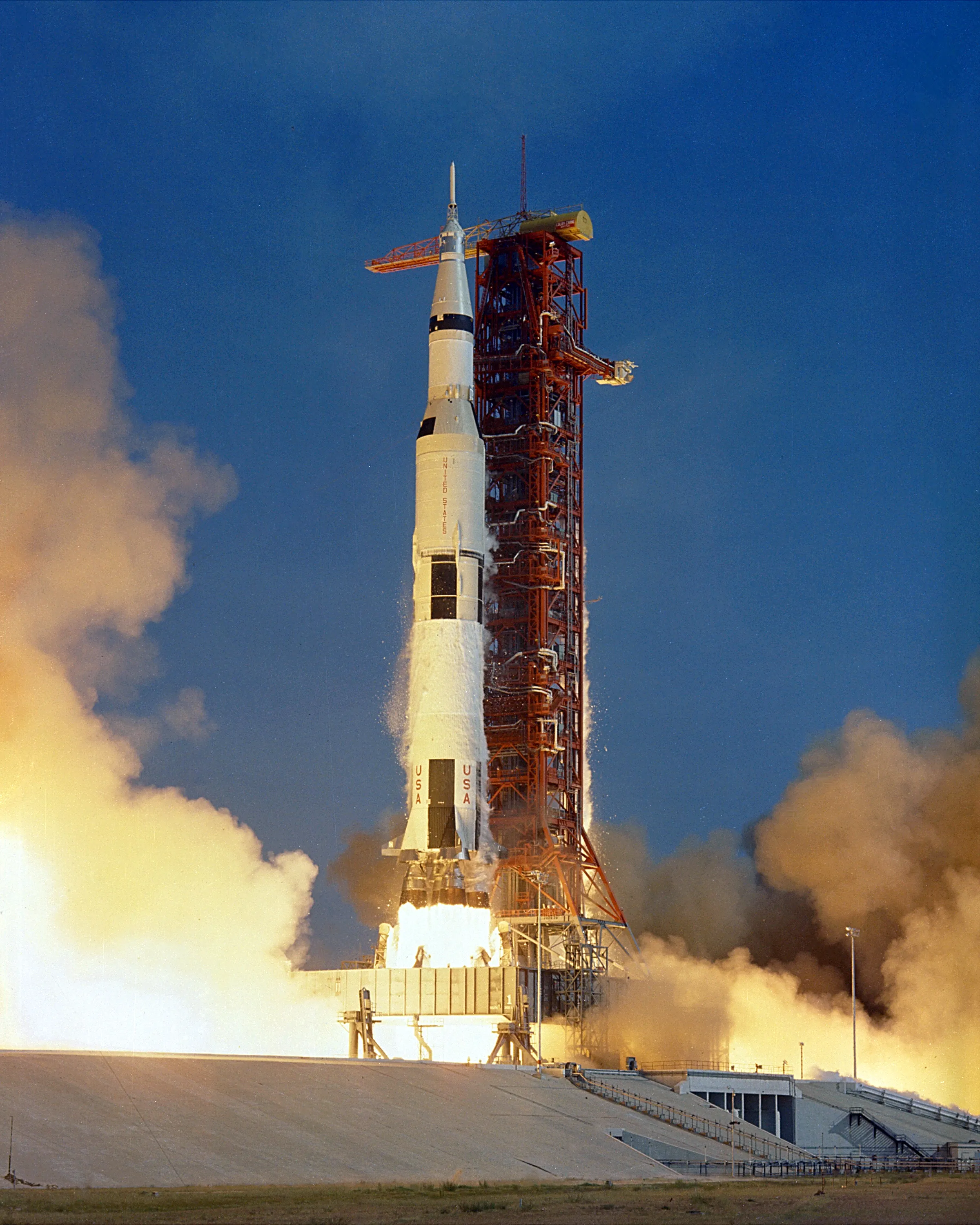
Photo by NASA in the public domain. Downloaded from Wikimedia.
But what if you could? What if you could design your own rockets? Run a space agency? Explore the solar system? What if you could be the one to make the countdown, and then press the button to launch the rocket? With Kerbal Space Program 2 you can!
In the beginning
In the beginning there was Kerbal Space Program, an ambitious space simulation game originally released in 2011. It was a passion project of Felipe Falanghe, a Brazilian game developer working for a media company, Squad. With Kerbal Space Program Felipe explored the idea of making realistic space exploration accessible to the masses. The alpha was very rudimentary featuring only a single planet, limited physics and game play. But the game showed promise, and little by little it gained advanced physics, a solar system to explore, and a fullfledged career mode. I had always been in awe of the space exploration missions of NASA, ESA, and other space agencies. So when I discovered Kerbal Space Program I bought it and had some fun doing some simple missions. But for some reason I never really got into the game, and my space agency felt more like a satellite company.
Earth orbited the sun eight more times, 2019 rolled around, and a successor was announced. An early access version of Kerbal Space Program 2 was to take off in 2020, and it would be developed by Intercept Games. We orbited the sun once more, 2020 came about, but there were no signs of a release on the event horizon. It would take three more orbits before the game would be released in February 2024.
But the proverbial rocket crashed on the launch, much to the chagrin of the Kerbal Space Program community. The game received negative reviews on Steam, many complaining about the lack of gameplay content, bugs, and poor performance. I was dissapointed, but the Apollo program wasn’t built in a day, so I decided to wait for the game to mature.
Then 2023 came about, the northern hemisphere was leaning away from the sun, and Intercept Game launched the game’s firt big update “For Science!“. With love and care the developers had added some much needed content in the form of a science progression and mission system. Performance issues and bugs had also been adressed. Kerbal Space Program was shaping up to look like a proper game. I decided to put on the space suit and give it a try.
A space agency
I arrive at the Kerbal Space Center, the headquarters of the Kerbal Space Program. For some reason I, a total stranger with no rocket experience, have been put in charge of the space program. Fortunately the space program already has all the buildings and facilities you’d need to get started. I am lead through a series of tutorials teaching me the basics of rocket design and rocket control. Kerbal Space Program 2’s tutorials quickly move you from firing rockets at the sky to orbital mechanics. They stop short of the more advanced topics like interplanetary travel, but they give you a good foundation to build on.
What goes up must come down
My fledgling space program is ready to launch its first rocket. I don’t have that many rocket parts yet, so I’m tasked with some simple missions. As a lesson in the futility of reaching orbit I’m told to launch a rocket up to a certain height. I build what amounts to an oversized firework, launch it straight up, and watch it fall back down again. My fearless Kerbalnaut Tim Kerman does not seem all too entused about the dangers, but he’s a professional. As I watch the rocket fall down I learn a valueable lesson about the importance of parachutes. Not to mention how Kerbin’s (the planet) rotation keeps moving my rocket away from the launch pad. When you launch high enough you’ll find the earth moves away from under you, and your landing site will be a few kilometers away from the launch pad. These small progressive lessons are a great way to gain some intuition about how rocket physics and orbital mechanics work.
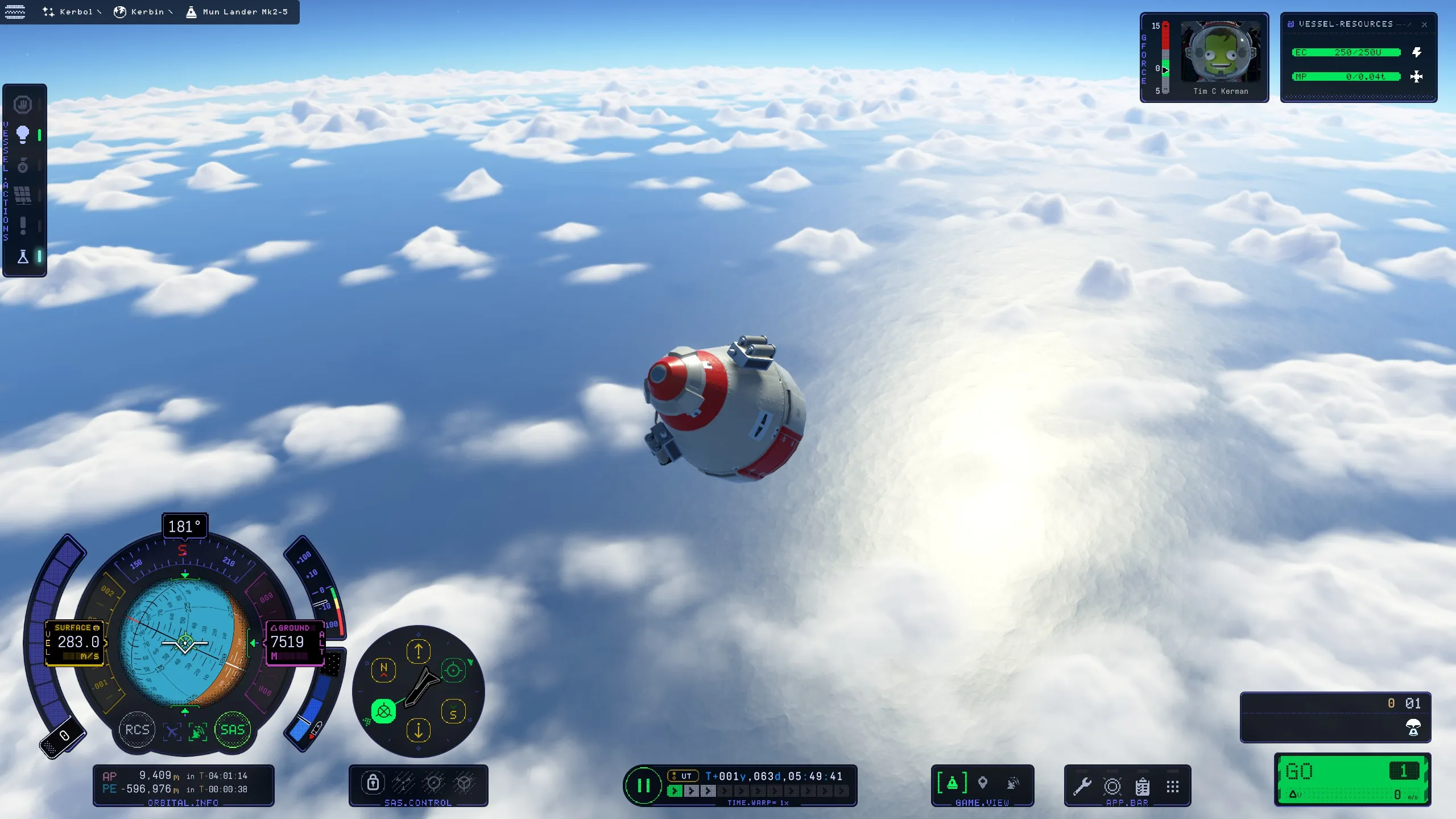
Orbiting a green rugged marble
I complete the first few missions, and I’m rewarded with science points that I use to unlock new rocket parts. My budding space agency is shaping up to be a real do-getter as I quickly achieve orbit around Kerbin. The first few missions are fairly simple, yet they give you a sense of accomplishment! As you orbit Kerbin (the planet) for the first time you can’t help but feel a sense of wonder as you admire the green marble below you. Your space rocket is hurtling through space a couple of thousand meters per second, yet you feel calm and at peace.
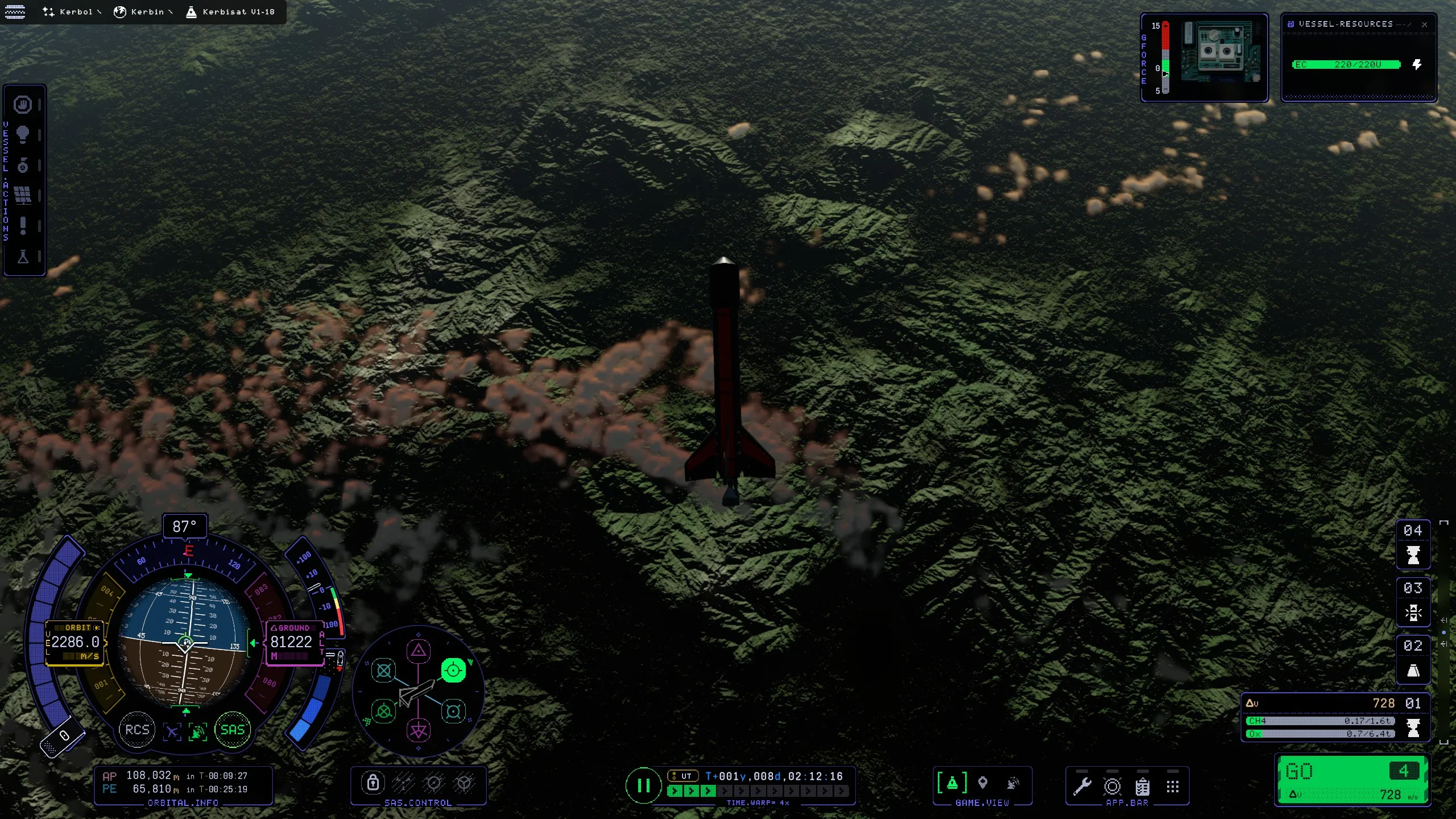
Kerbin is one of the many planets and moons in the Kerbal system, the solar system of Kerbal Space Program 2. The Kerbal system is a scaled down version of our own solar system, so Kerbin is the equivalent of Earth, and Mun is the equivalent of the Moon. To make space travel a bit easier the entire solar system is scaled down, thus reducing the gravity of the planets, and the distances between them. This allows your rockets to reach celestial bodies without too much fuel and mass. You’ll still find the distances cosmic in nature though, so a fast forward button is available to speed up time. As the game will teach you, space travel is mostly the silent waiting between the exciting storms of rocket burns to adjust your trajectories.
Yet, the game is not all quiet. First of all the game forgoes the realistic silence of space and blasts the engine noise of your rockets into your ears. Even as you watch your rocket from outside in the cold vacuum of space you’ll hear the roar of the engines. The game also has a beautiful soundtrack that plays as you explore the solar system. As you near your planned maneuver nodes the music will swell into an excited crescendo. This is a nice touch that connects the soundtrack to the gameplay, and it makes the game feel more in touch with you the player.
Freedom to explore and solve things your way
I complete a couple of more missions and find that increasingly I’m left to figure out my rocket designs on my own. Getting anywhere in the game is simply a matter of strapping enough explosive fuel and some engines to a command capsule. Kerbalnauts are fortunately very brave, so volunteering them for a mission is not a problem. For my first Mun mission I find myself overcompensating a bit, and I end up with a rocket that would probably bankrupt my space agency. Fortunately for me Kerbal Space Program 2 does not yet have an economy system, so I can build rockets with reckless abandon.
The game gives you the option of manned and unmanned probes. My agency begins it journey sending Tim Kerman into space and onto the two moons. But as I progress my space agency has shifted a bit toward unmanned probes (satellites) and rovers. An advantage of unmanned probes is that you don’t risk stranding your poor Kerbalnauts in space.
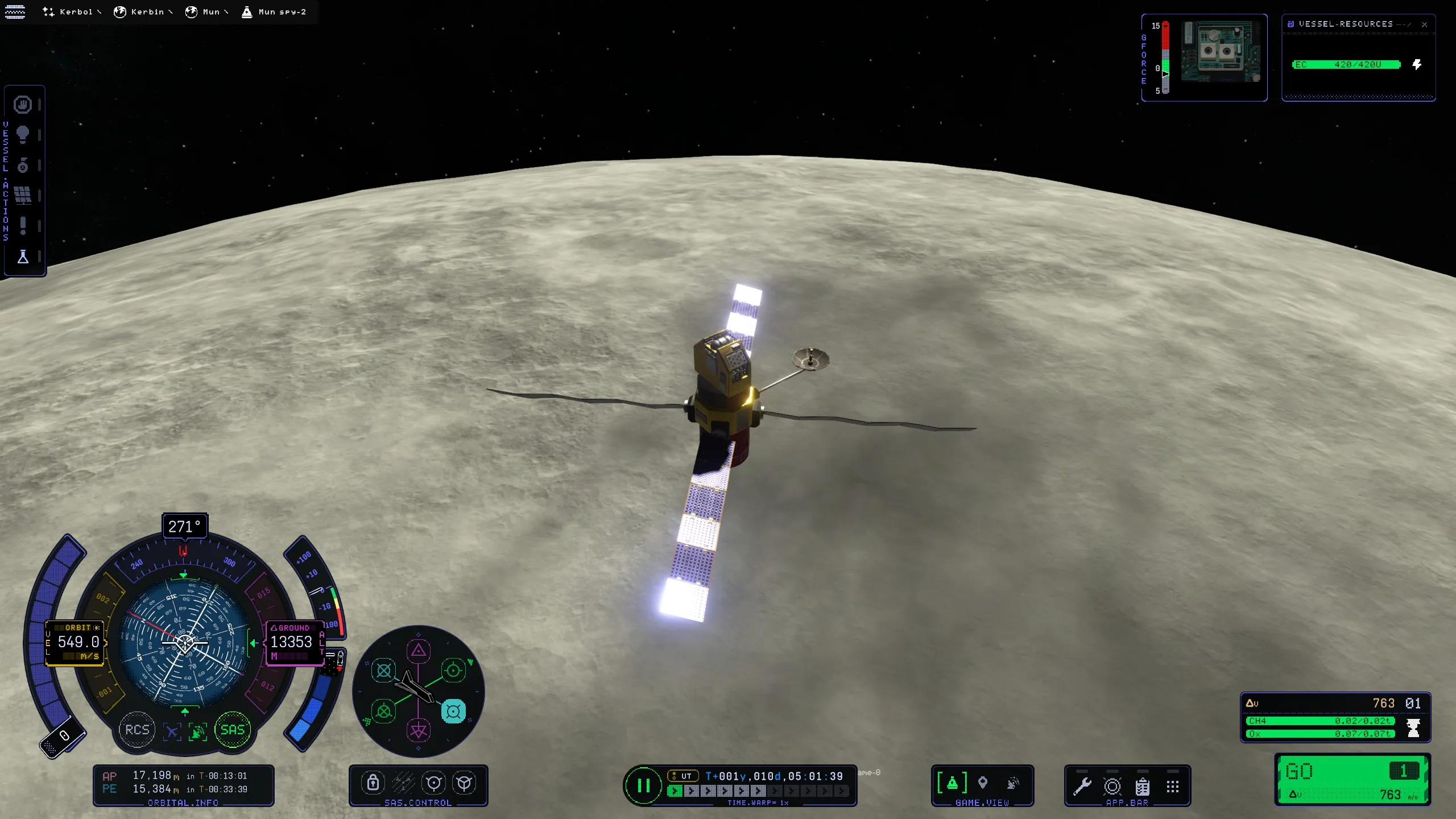
Sunrises and Sunrises
As I orbit the various celestial bodies I get to experience the magic of the sunrise and sunset from space. A big development from the first game is the improved graphics and graphical style. Gone are the mostly matte textures and lighting of the first game, and in comes a sense that the sun actually shines! With proper volumetric cloud rendering and other graphical effects space looks better than ever. As my rocket orbits a planet and I slowly see the sun rise over the horizon I forget my mission for a moment and just enjoy the view.
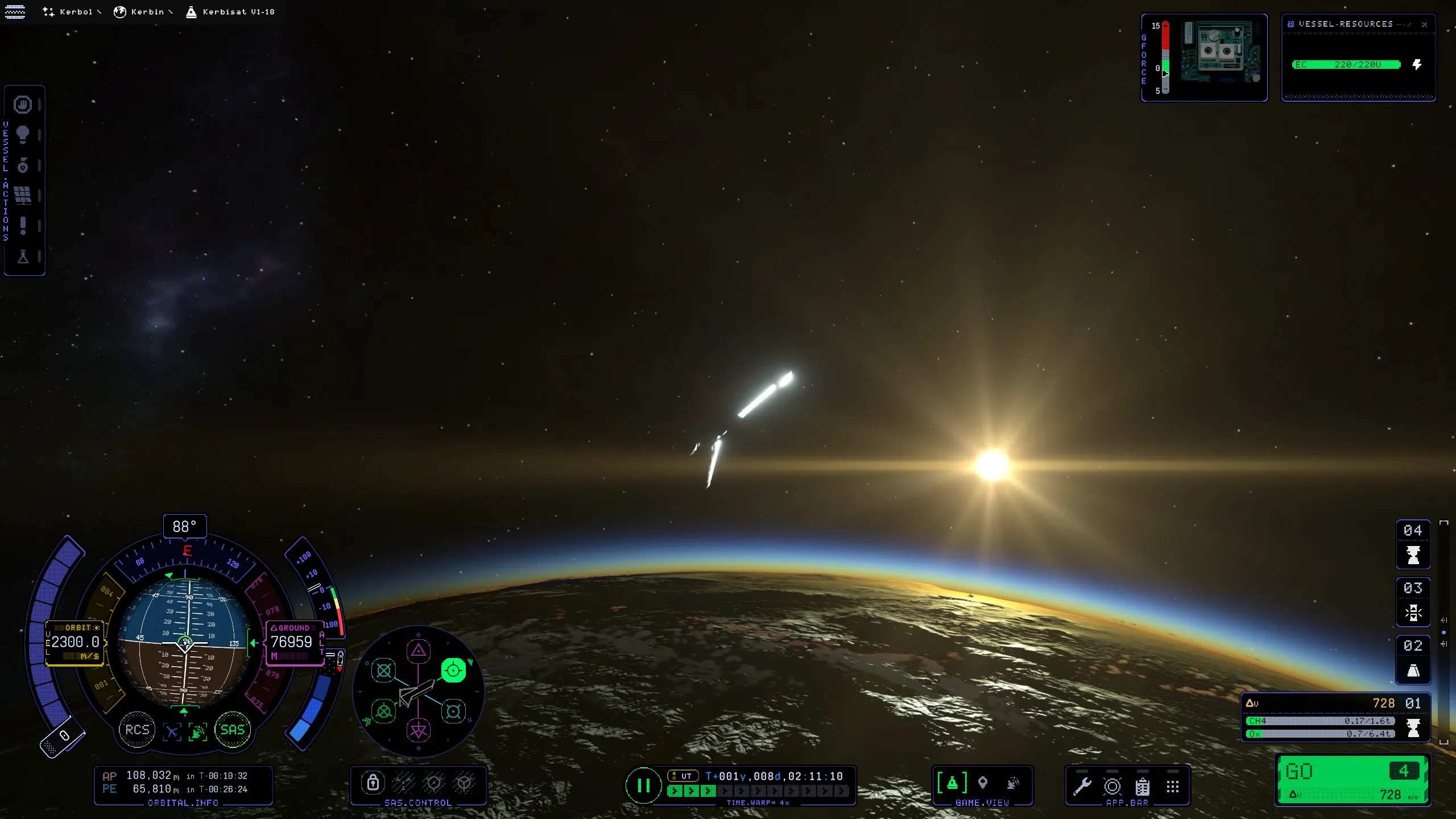
Rocket science is hard
The game really shines in the early game. when you are still exploring the close vicinity of Kerbin. But as the missions progress I miss some of the guidance you get in the early game. Going interplanetary is almost impossible without leaving the game and doing some research on the Internet.
There are also the occassional bugs and performance issues. For example the game sometimes fail to render an orbital trajectory for your rocket in the map view. If you can’t see the trajectory you can’t plan your rocket burns, and you can’t get anywhere. The game’s map UI also has some usability issues. Spaceship icons and labels often get in the way of your maneuver nodes (a way to create burn maneuver plans). If you zoom out the map view maneuver nodes become hard to manipulate, so you’ll find yourself zooming in and out.
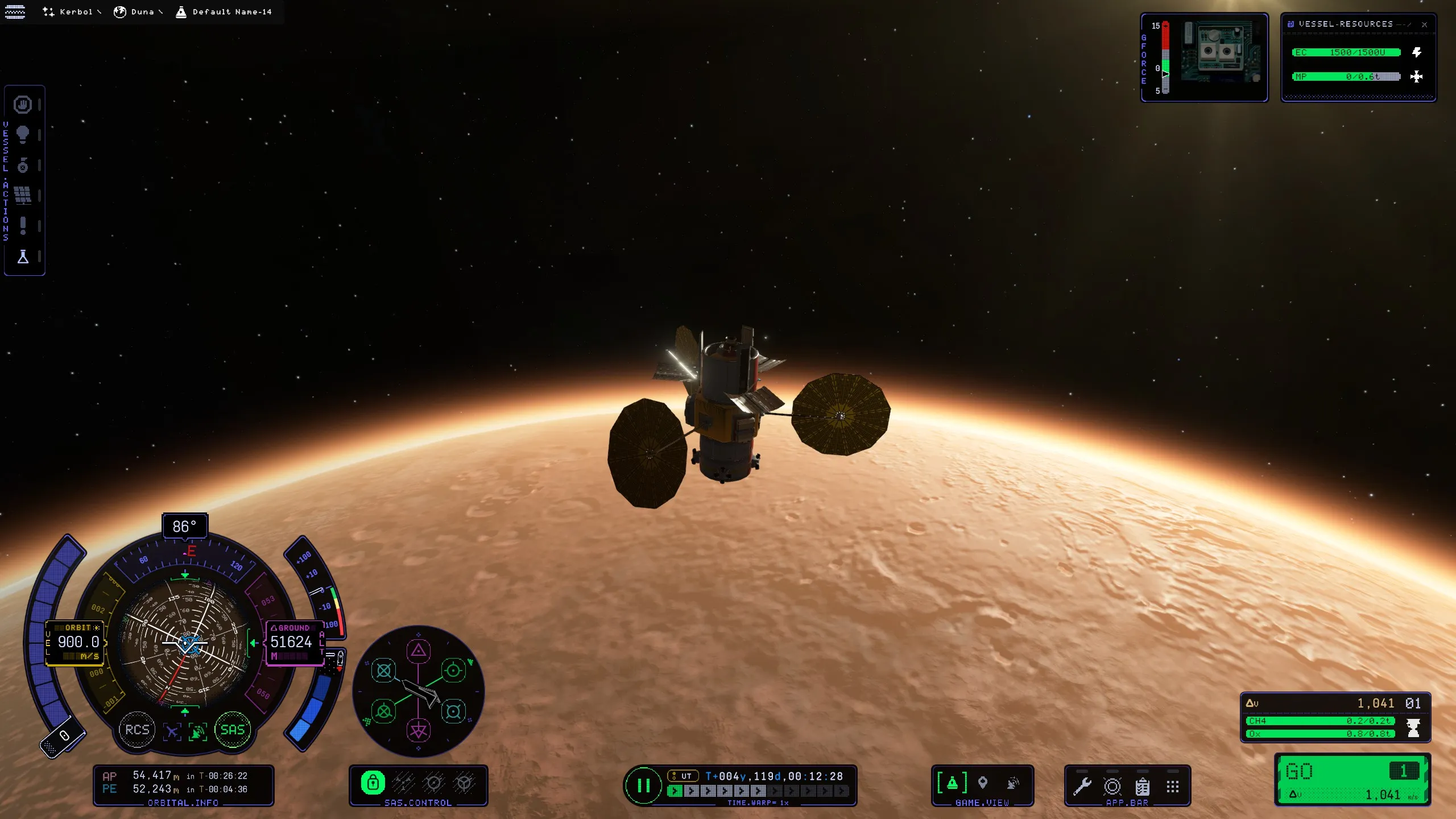
Even so the game manages to be a lot of fun, and I’ve had a blast exploring Kerbin, its moons, and beyond. My agencies latest accomplishment (as of this writing) was a Rover mission to the surface of the moon. Another triumph for my agencies was a successful Duna (Mars) satellite. My satellite did not suffer the catastrophic fate of the real life Mars Climate Orbiter, and it is happily orbiting Duna (Mars) as we speak. I guess it helps that the game does not fail to account for different units of measurement, using only the metric system. Take that American Imperial system! Triumphs like these are what makes the game fun, and I’m looking forward to exploring the rest of the solar system.
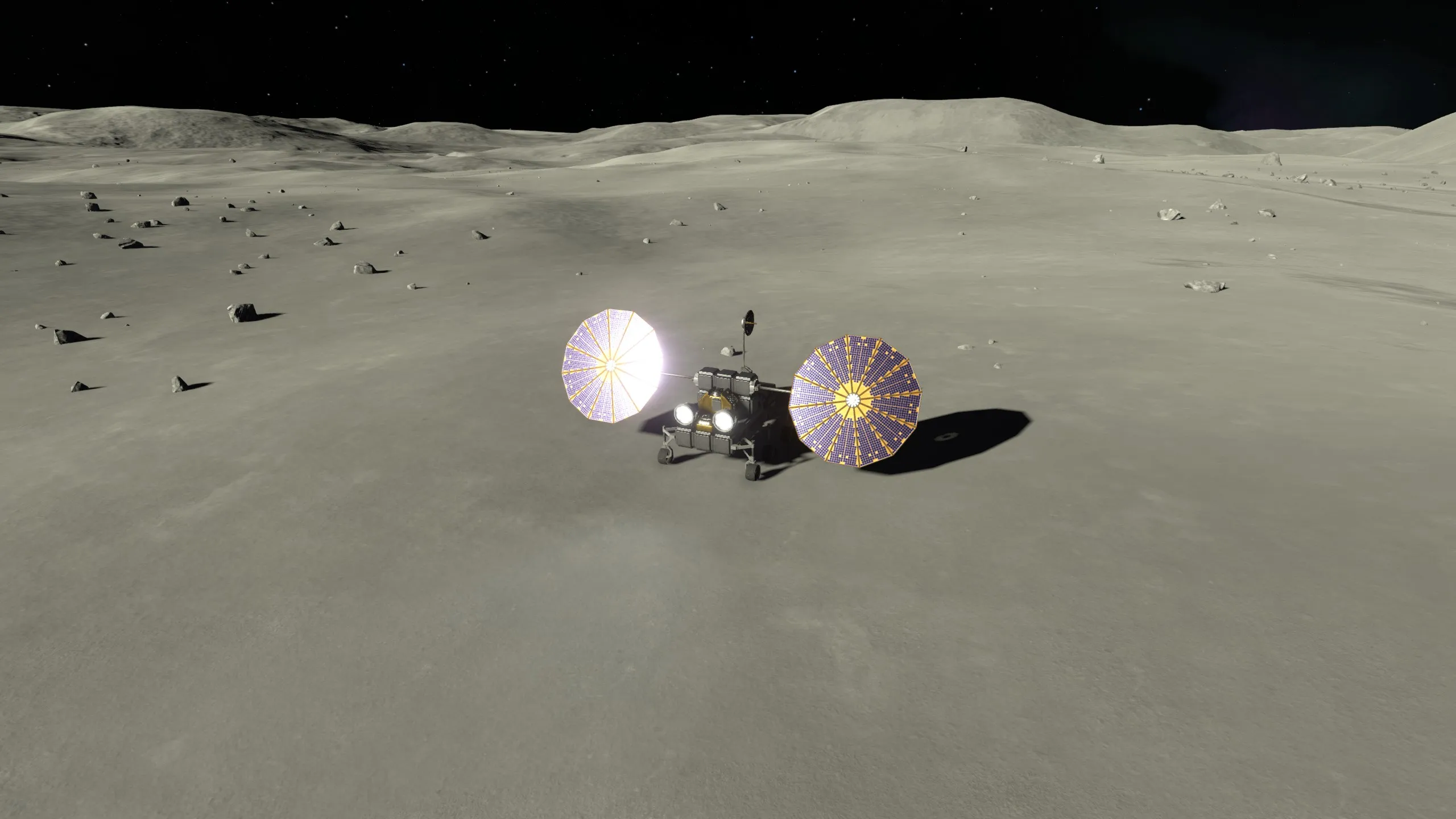
The future
The game is still in the early stages, and there are many features to come. Upcoming features include colonization, interstellar travel, multiplayer, and more. For now though I’m declaring Lift-off! If you like simulation games and space exploration I recommend you give Kerbal Space Program 2 a try. The game is already very playable, and it can only get better from here!
See you around, space cowboy!